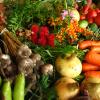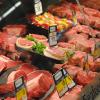Food Fraud is an issue on the rise and our bodies are the victims at risk.
Most people don’t speculate that the labels on food could have deliberately misleading information about the product, or that the product itself could actually be a fake. Food Fraud, defined as, “the deliberate and intentional misrepresentation of food, food ingredients, or food packaging; or false or misleading statement about a product for economic gain,” scams people every day, and costs the global food industry up to $15 billion annually.
What are some of the worst or most common incidents of food fraud? Horse meat has been discovered in ground beef. Fish fillets are often sold under the name of a completely different species of fish in order to disguise a low quality fish as a higher quality one. Cow milk may be cut with the milk of sheep, goats, and other species. Ground coffee and instant teas might contain twigs, paper, malt, starch and other grains. One of the biggest food fraud culprits is olive oil. It’s often cut with cheaper oils, and even though the label may read, “extra-virgin Italian olive oil,” chances are it’s a secondary pressing from somewhere else entirely. Perhaps some of the most disconcerting finds were traces of Malayan box turtle and Macaque monkey meat in the food chain.
Although not every case of food fraud poses a dire public health threat, there have been some extremely serious cases. A few years ago, a baby formula was contaminated with the chemical melamine to artificially inflate protein value. The fraudulent formula sickened around 300,000 Chinese children, with a reported 6 infant deaths.
It’s difficult for the FDA and public health activists to even keep up with the amount of adulterants and contaminants in food. According to the MSU study, an adulterant is something that is intentionally added to food or drink while a contaminant is something that occurs by accident or unintended reaction with something else.
In a society that is slowly but surely exerting more control over its food choices, consumers demand to be made aware of gluten, GMOs, and pesticide content in their food, so it’s an uneasy thought that some of our food may be intentionally tampered with or mislabeled. Healthy food is generally more expensive than junk food, and food fraudsters tend to target more expensive products in order to produce them as cheaply as possible.
Food fraud is a tricky issue, but there are ways to stay proactive in avoiding fraudulent products. An easy one is to stick to buying unprocessed products. For example, buy coffee beans to grind rather than buying ground coffee.
Also, stick to locally-sourced products and cook as many meals from scratch as possible. In a study by the Food Safety Authority of Ireland, the organization analyzed a microwavable pizza. The study concluded that the pizza contained 35 different ingredients that were passed through 60 countries on five continents. That’s a lot of opportunity for food fraudsters to intervene.
Thankfully, scientists are also intervening in the issue. Research has proven “DNA barcoding” to be a successful way to identify fraudulent products including seafood, meat, edible plants, dairy products, and processed foods. Instead of reading all the DNA in the specimen (a process that can take days), scientists simply check for short DNA “sentences” that are characteristic of the species it’s supposed to be. The process is so accurate it can even be used to detect geographical fraud where the country of origin is incorrectly labeled.
For more information on food fraud and how to protect yourself from it, check out these organizations.










Facebook comments